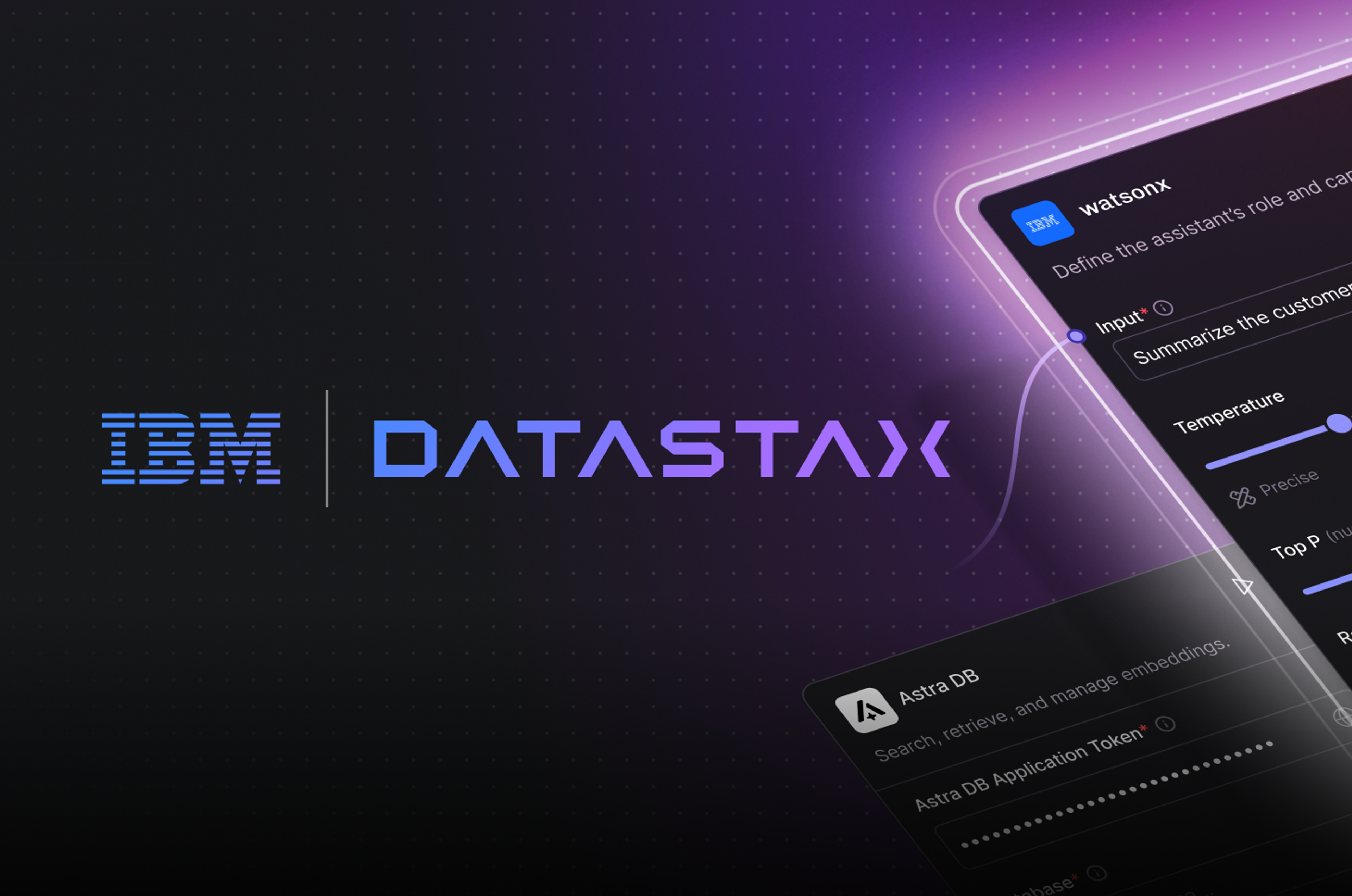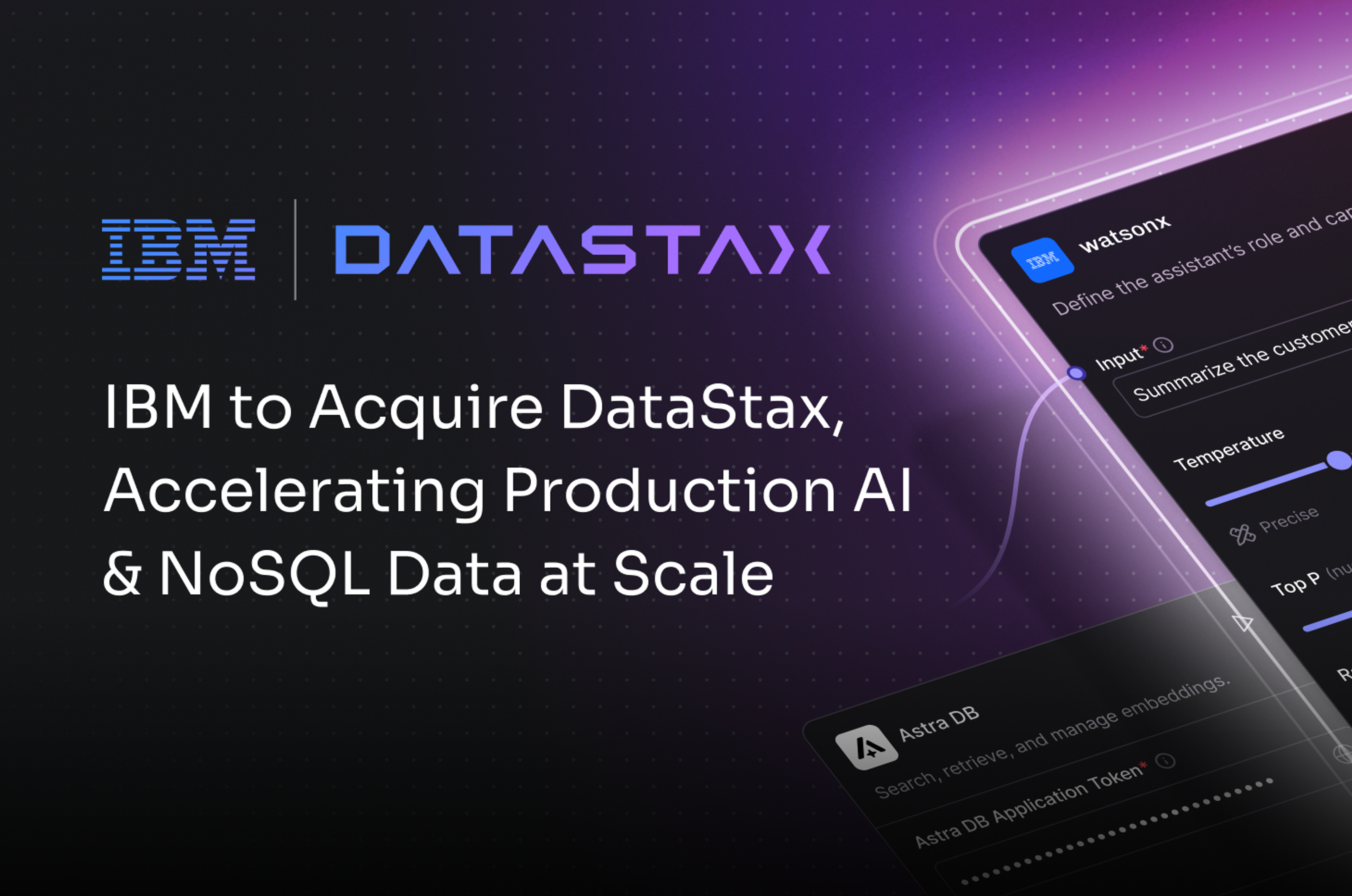For more recent data modeling content, check out the sample data models in the Data Modeling By Example learning series, as well as our Data Modeling in Apache Cassandra® whitepaper.
Picking the right data model is one of the biggest challenges when working with Cassandra. If you come from a relational background, CQL will look familiar, but the way you use it can be very different. This post explains the basic rules you should keep in mind when designing your schema for Cassandra, ensuring you get great performance from the start. Better yet, your performance will scale linearly as you add nodes to the cluster.
Many developers mistakenly try to apply traditional relational modeling rules to Cassandra, which can lead to unnecessary complications. Instead, focus on what truly matters for Cassandra. When working with Cassandra, don't stress over minimizing writes or avoiding data duplication. Writes are inexpensive, and duplicating data often enhances read efficiency, so the traditional constraints of relational databases simply don’t apply.
Basic goals for Cassandra data modeling
These are the two high-level goals for your data model:
-
Spread data evenly around the cluster
-
Minimize the number of partitions read
There are other, lesser goals to keep in mind, but these are the most important. For the most part, I will focus on the basics of achieving these two goals. There are other fancy tricks you can use, but you should know how to evaluate them, first.
Rule 1: Spread data evenly around the cluster
To maintain optimal performance and reliability, every node in the cluster should hold roughly the same amount of data. If you don't follow this rule, some nodes may become overloaded while others remain underutilized, leading to slower queries, inefficient resource use, and increased risk of node failures.
Cassandra makes it easy to spread data evenly around the cluster, but it's not a given. Rows are distributed based on a hash of the partition key, which is the first element of the PRIMARY KEY. A well-chosen primary key ensures a balanced data spread, minimizing hotspots and evenly distributing the workflow. So, the key to spreading data evenly is this: pick a good primary key. We'll explain how to pick a good primary key in a bit.
Rule 2: Minimize the number of partitions read
Partitions are groups of rows that share the same partition key. When you issue a read query, it’s important to read rows from as few partitions as possible. Why is this important? Each partition may reside on a different node in the cluster. The coordinator node will generally need to issue separate commands to different nodes for each partition you request, adding network overhead and increasing the variation in latency, as the response time from each node can differ significantly depending on network conditions and node load.
Even on a single node, reading from multiple partitions is more expensive than reading from just one due to how rows are stored. When data is spread across multiple partitions, Cassandra must perform additional operations like disk seeks and lookups, which incur higher I/O costs. If you don't follow this rule, your queries will become slower and less predictable, especially as your data grows. Minimizing the number of partitions read reduces query complexity and overhead, leading to faster and more efficient data retrieval.
Conflicting rules?
If it's good to minimize the number of partitions that you read from, why not put everything in a single big partition? You would end up violating Rule #1, which is to spread data evenly around the cluster. The point is, these two goals often conflict, so you'll need to try to balance them.
Model around your queries
The way to minimize partition reads is to model your data to fit your queries. Don't model around relations. Don't model around objects. Model around your queries. Here's how you do that:
Step 1: Determine what queries to support
Try to determine exactly what queries you need to support. This can include a lot of considerations that you may not think of at first. For example, you may need to think about:
-
Grouping by an attribute
-
Ordering by an attribute
-
Filtering based on some set of conditions
-
Enforcing uniqueness in the result set
-
etc ...
Changes to just one of these query requirements will frequently warrant a data model change for maximum efficiency.
Step 2: Try to create a table where you can satisfy your query by reading (roughly) one partition
In practice, this generally means you will use roughly one table per query pattern. If you need to support multiple query patterns, you usually need more than one table. To put this another way, each table should pre-build the "answer" to a high-level query that you need to support. If you need different types of answers, you usually need different tables. This is how you optimize for reads. Remember, data duplication is okay. Many of your tables may repeat the same data.
Applying the rules: Examples
To show some examples of a good thought process, I will walk you through the design of a data model for some simple problems.
Example 1: User lookup
The high-level requirement is "we have users and want to look them up". Let's go through the steps: Step 1: Determine what specific queries to support Let's say we want to either be able to look up a user by their username or their email. With either lookup method, we should get the full set of user details. Step 2: Try to create a table where you can satisfy your query by reading (roughly) one partition Since we want to get the full details for the user with either lookup method, it's best to use two tables:
Now, let's check the two rules for this model: Spreads data evenly? Each user gets their own partition, so yes. Minimal partitions read? We only have to read one partition, so yes. Now, let's suppose we tried to optimize for the non-goals, and came up with this data model instead:
This data model also spreads data evenly, but there's a downside: we now have to read two partitions, one from users_by_username (or users_by_email) and then one from users. So reads are roughly twice as expensive.
Example 2: User Groups by Join Date
Suppose we continue with the previous example of groups, but need to add support for getting the X newest users in a group. We can use a similar table to the last one:
Here we're using a timeuuid (which is like a timestamp, but avoids collisions) as the clustering column. Within a group (partition), rows will be ordered by the time the user joined the group. This allows us to get the newest users in a group like so:
This is reasonably efficient, as we're reading a slice of rows from a single partition. However, instead of always using ORDER BY joined DESC, which makes the query less efficient, we can simply reverse the clustering order:
Now we can use the slightly more efficient query:
As with the previous example, we could have problems with data being spread evenly around the cluster if any groups get too large. In that example, we split partitions somewhat randomly, but in this case, we can utilize our knowledge about the query patterns to split partitions a different way: by a time range. For example, we might split partitions by date:
We're using a compound partition key again, but this time we're using the join date. Each day, a new partition will start. When querying the X newest users, we will first query today's partition, then yesterday's, and so on, until we have X users. We may have to read multiple partitions before the limit is met. To minimize the number of partitions you need to query, try to select a time range for splitting partitions that will typically let you query only one or two partitions. For example, if we usually need the ten newest users, and groups usually acquire three users per day, we should split by four-day ranges instead of a single day.
Summary
The basic rules of data modeling covered here apply to all (currently) existing versions of Cassandra, and are very likely to apply to all future versions. Other lesser data modeling problems, such as dealing with tombstones, may also need to be considered, but these problems are more likely to change (or be mitigated) by future versions of Cassandra. Besides the basic strategies covered here, some of Cassandra's fancier features, like collections, user-defined types, and static columns, can also be used to reduce the number of partitions that you need to read to satisfy a query. Don't forget to consider these options when designing your schema. Hopefully I've given you some useful fundamental tools for evaluating different schema designs. If you want to go further, I suggest taking Datastax's free, self-paced online data modeling course (DS220). Good luck!
FAQs:
1. What is a Cassandra data model?
A Cassandra data model defines how data is structured, stored, and accessed in an Apache Cassandra database. It follows a query-driven approach, meaning data is modeled based on how it will be retrieved rather than traditional relational structures.
2. How does a Cassandra data model differ from a relational database model?
Unlike relational databases that use joins and normalized tables, Cassandra stores data in a denormalized format across multiple nodes. It prioritizes data access patterns by duplicating data for faster retrieval rather than enforcing strict database schema constraints.
3. What are primary and partition keys in Cassandra?
-
A partition key determines how data is distributed across nodes, ensuring even load balancing.
-
A primary key consists of a partition key and optional clustering columns, which define the sorting order within a partition.
-
Example: PRIMARY KEY (user_id, timestamp) means user_id is the partition key, and timestamp is the clustering column.
4. How do clustering columns affect data retrieval?
Clustering columns define the order of rows within a single partition, optimizing query performance. For example, in a Cassandra table schema, sorting by timestamp allows retrieving the most recent data efficiently.
5. What is the replication factor in Cassandra?
The replication factor determines how many copies of incoming data are stored across multiple data centers. A higher replication factor improves failure handling but requires more storage and network resources.










